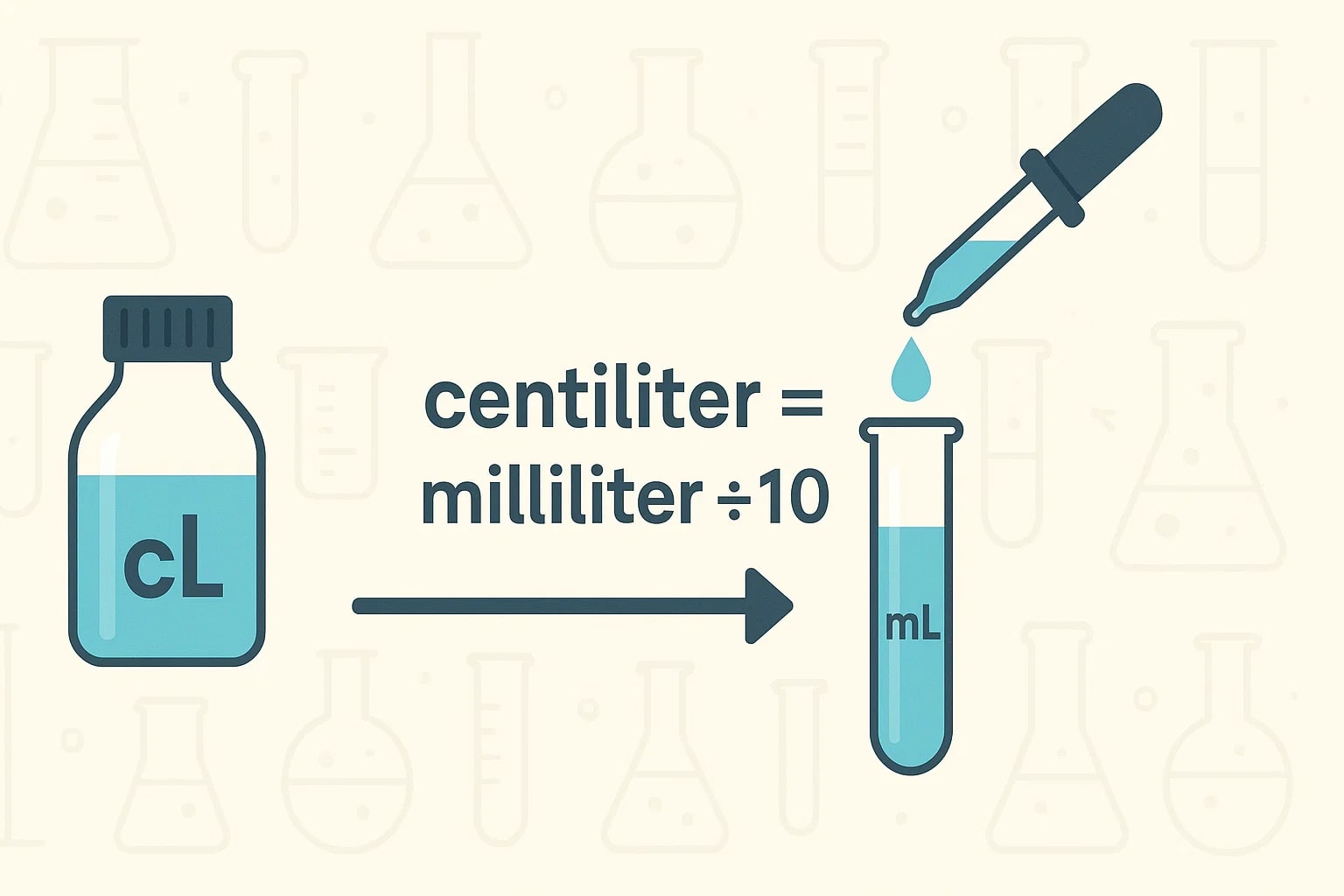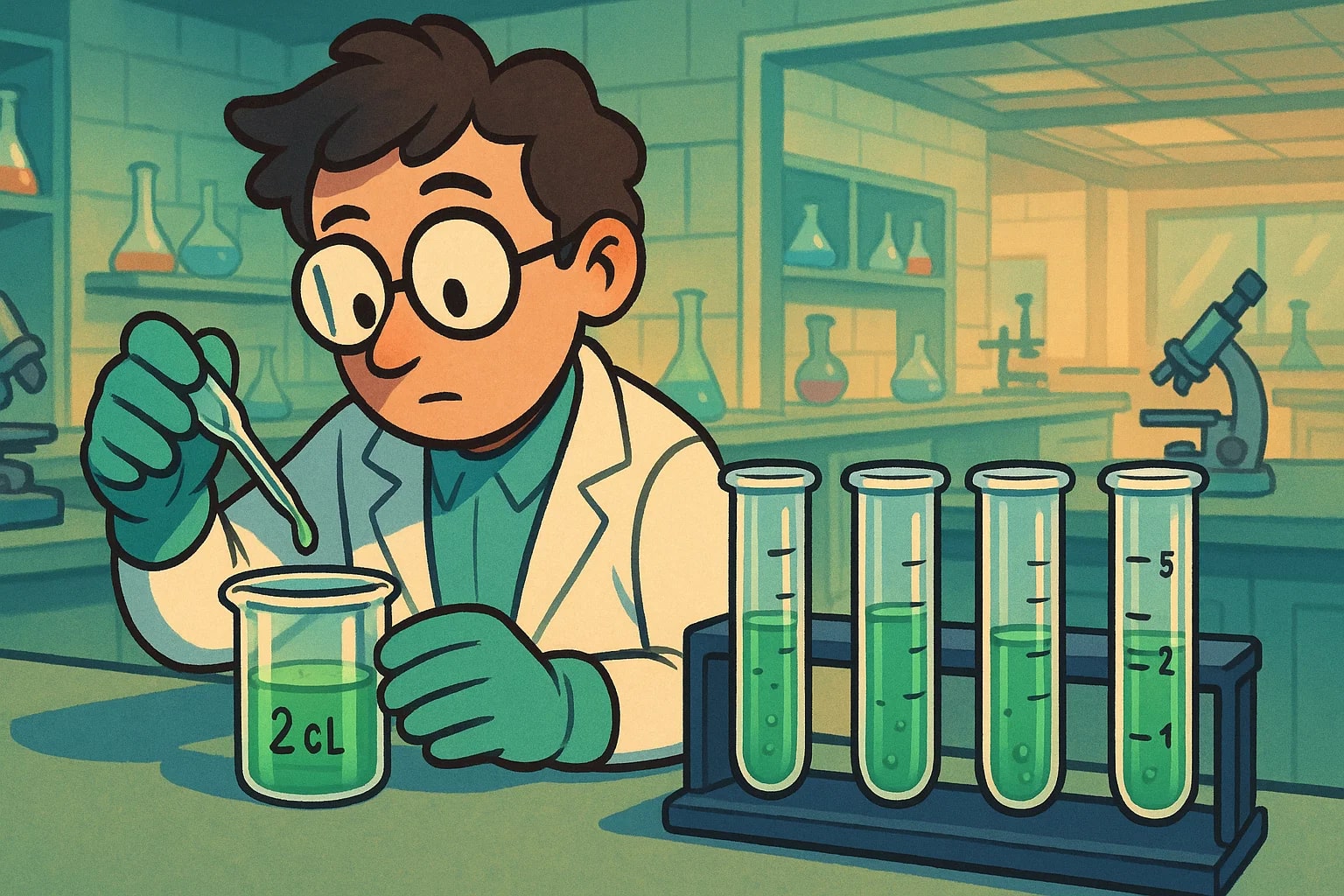centiliter to milliliter – How to convert cL to mL
The centiliter to milliliter conversion is one of the most practical in daily life. From measuring drinks to preparing precise recipes, these two units appear everywhere. Let’s go through their meaning, conversion formula, and some fascinating cultural facts.
What is a centiliter (cL)?
The centiliter (cL) equals 1⁄100 liter. It is often used in European bars, restaurants, and nutrition labeling. A small soda bottle may read 20 cL, which equals 200 mL.
What is a milliliter (mL)?
The milliliter (mL) is a smaller metric unit, equal to 1⁄1000 liter. It is widely used in science, healthcare, and cooking. Medicine doses, for example, are usually measured in milliliters.
Conversion formula – centiliter to milliliter
The two units are directly linked by the liter:
1 cL = 10 mL1 centiliter = milliliter ÷ 101 milliliter = centiliter × 10
Examples:
-
5 cL = 50 mL -
200 mL = 20 cL

For faster and broader conversions beyond centiliter and milliliter, try the Volume Converter or explore other Conversion Tools on Jetcalculator.
Do you know?
-
Centiliters on bottles: European liqueurs are often labeled in 70 cL or 35 cL, making them easy to compare to milliliters (700 mL and 350 mL).
-
Milliliters in medicine: Syrups and liquid prescriptions are almost always measured in mL, ensuring precision for dosing children and adults.
-
Pop culture note: In several cookbooks from the 20th century, cocktails were written in centiliters, but modern bartenders often switch to milliliters for clarity.
The Science Lab Connection – Precision in Every Drop
In chemistry and biology labs, accurate measurement is the key to reliable results. While liters are too large for practical experiments, both centiliters and milliliters are frequently used. A solution may be prepared in 2 cL, then divided into 20 mL samples for testing.
This close relationship allows researchers to switch between scales effortlessly. When developing vaccines, pharmaceutical labs rely heavily on milliliters for precision, but they may prepare stock solutions in centiliters before dilution. The conversion 1 cL = 10 mL guarantees consistency and avoids costly mistakes.
From the smallest droplet on a pipette to the labeled volume on a bottle, the cL–mL relationship continues to play a quiet but critical role in medicine, science, and industry.

A measure that scales with you
The centiliter and milliliter may look tiny on paper, but they have a massive presence in everyday life. From a chef’s recipe card to a pharmacist’s dosage note, these units make sure precision is never lost. The formula is simple — 1 cL = 10 mL — yet it connects science labs, kitchens, and even the labels on your favorite drink.
Whenever you see 5 cL written on a bottle or 50 mL in a prescription, you’ll know they speak the same language. It’s a reminder that measurement isn’t just math — it’s the bridge between accuracy and real life.

